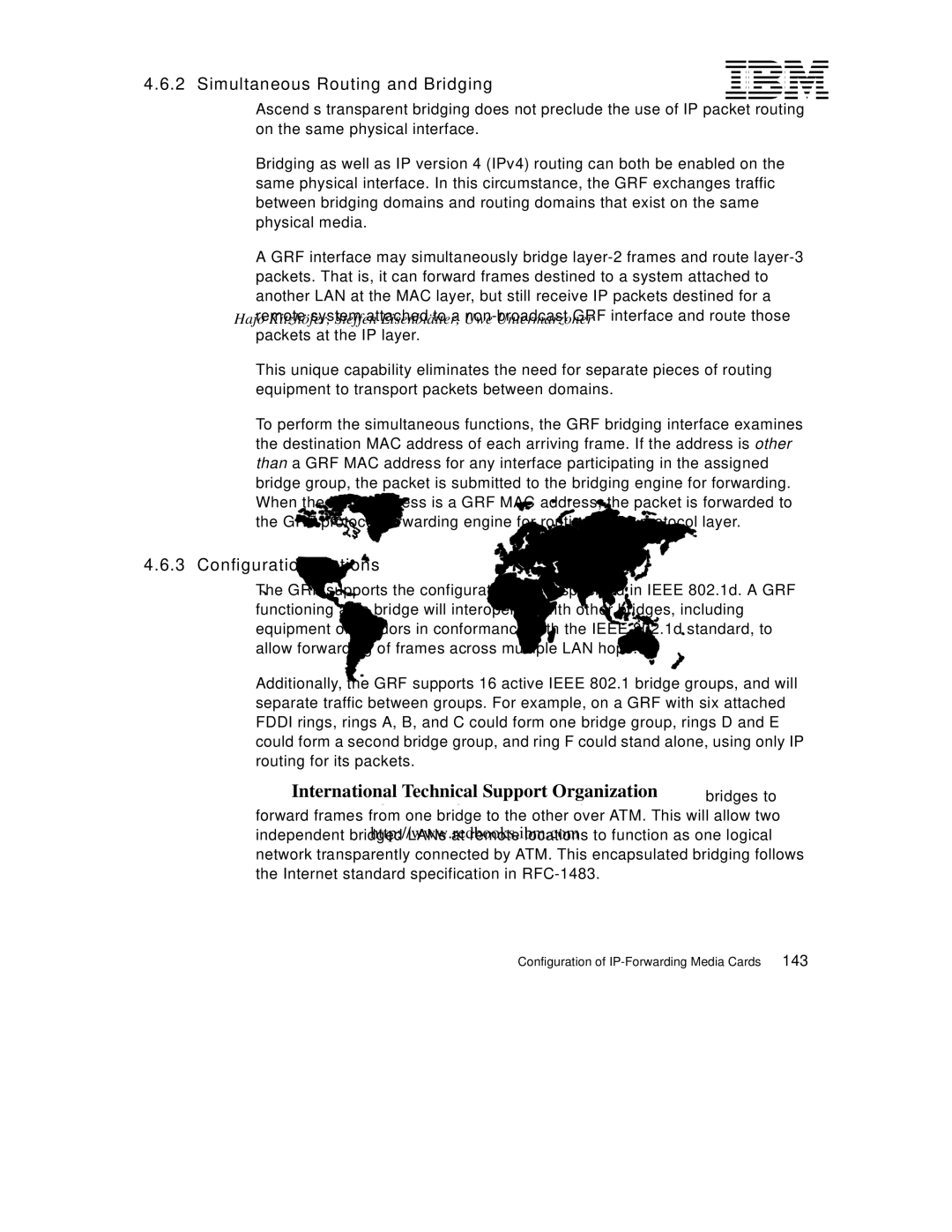4.6.2 Simultaneous Routing and Bridging
Ascend’s transparent bridging does not preclude the use of IP packet routing on the same physical interface.
Bridging as well as IP version 4 (IPv4) routing can both be enabled on the same physical interface. In this circumstance, the GRF exchanges traffic between bridging domains and routing domains that exist on the same physical media.
AGRF interface may simultaneously bridge
This unique capability eliminates the need for separate pieces of routing equipment to transport packets between domains.
To perform the simultaneous functions, the GRF bridging interface examines the destination MAC address of each arriving frame. If the address is other than a GRF MAC address for any interface participating in the assigned bridge group, the packet is submitted to the bridging engine for forwarding. When the MAC address is a GRF MAC address, the packet is forwarded to the GRF protocol forwarding engine for routing at the protocol layer.
4.6.3 Configuration Options
The GRF supports the configuration items specified in IEEE 802.1d. A GRF functioning as a bridge will interoperate with other bridges, including equipment of vendors in conformance with the IEEE 802.1d standard, to allow forwarding of frames across multiple LAN hops.
Additionally, the GRF supports 16 active IEEE 802.1 bridge groups, and will separate traffic between groups. For example, on a GRF with six attached FDDI rings, rings A, B, and C could form one bridge group, rings D and E could form a second bridge group, and ring F could stand alone, using only IP routing for its packets.
A GRF functioning as a bridge will also interoperate with other bridges to forward frames from one bridge to the other over ATM. This will allow two independent bridged LANs at remote locations to function as one logical network transparently connected by ATM. This encapsulated bridging follows the Internet standard specification in
Configuration of | 143 |
